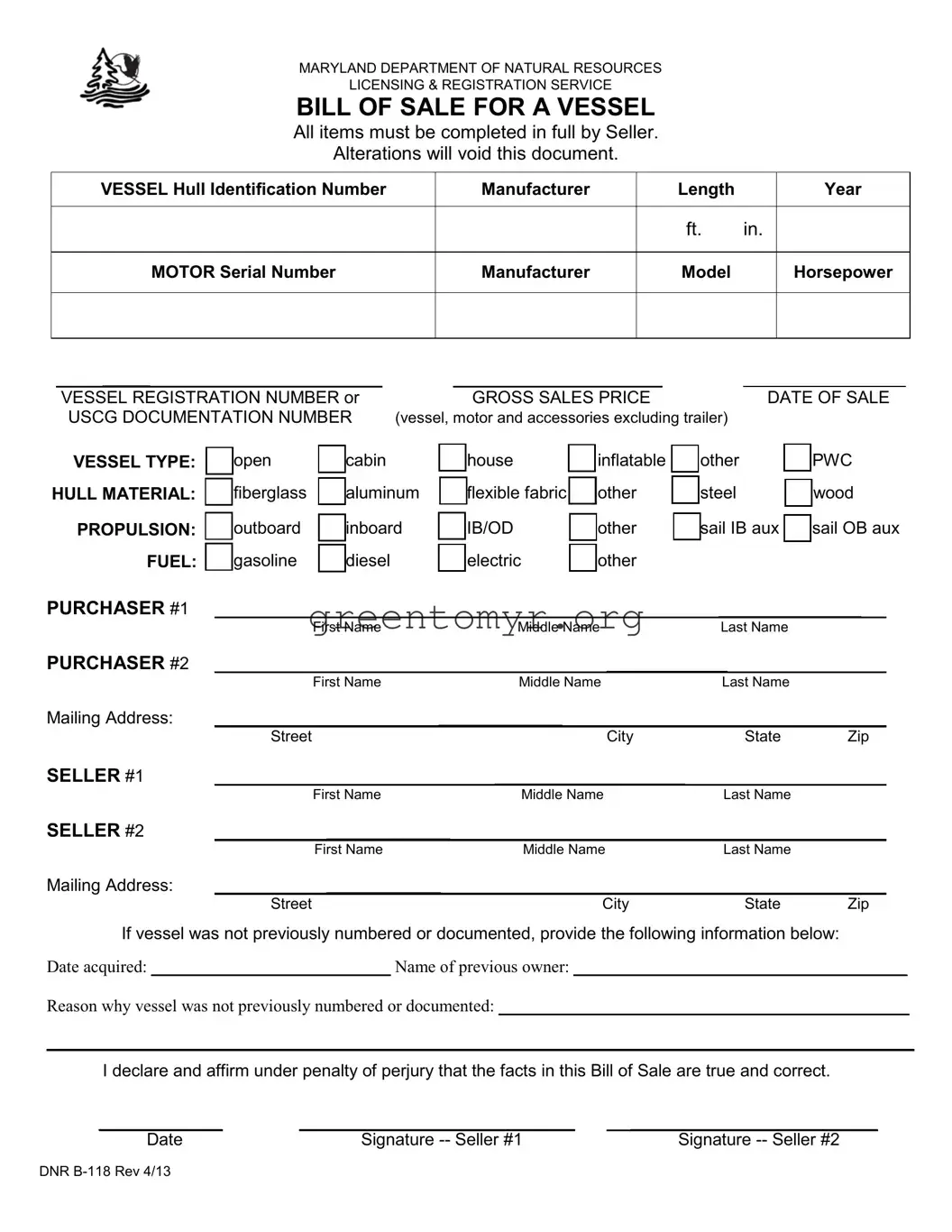The BOS DNR B-118 form serves as a vital document in various legal and administrative contexts, encompassing critical information necessary for compliance with state regulations. This form often plays a role in documenting essential transactions or events, such as the transfer of property or compliance with environmental standards. Designed for use by individuals and professionals alike, it is structured to capture necessary details in a clear and concise manner. The information collected on the B-118 form typically includes identifiers such as names, addresses, and relevant dates, along with specific data pertaining to the purpose of the submission. It ensures that all parties involved are aware of their rights and responsibilities, promoting transparency and accountability. By providing a standardized format, the form helps streamline processes and reduces the potential for errors or disputes. Understanding the nuances of the BOS DNR B-118 form is crucial for anyone engaging in activities that require environmental compliance or property documentation. Adequate completion of this form not only helps in adhering to legal requirements but also safeguards personal and organizational interests.

